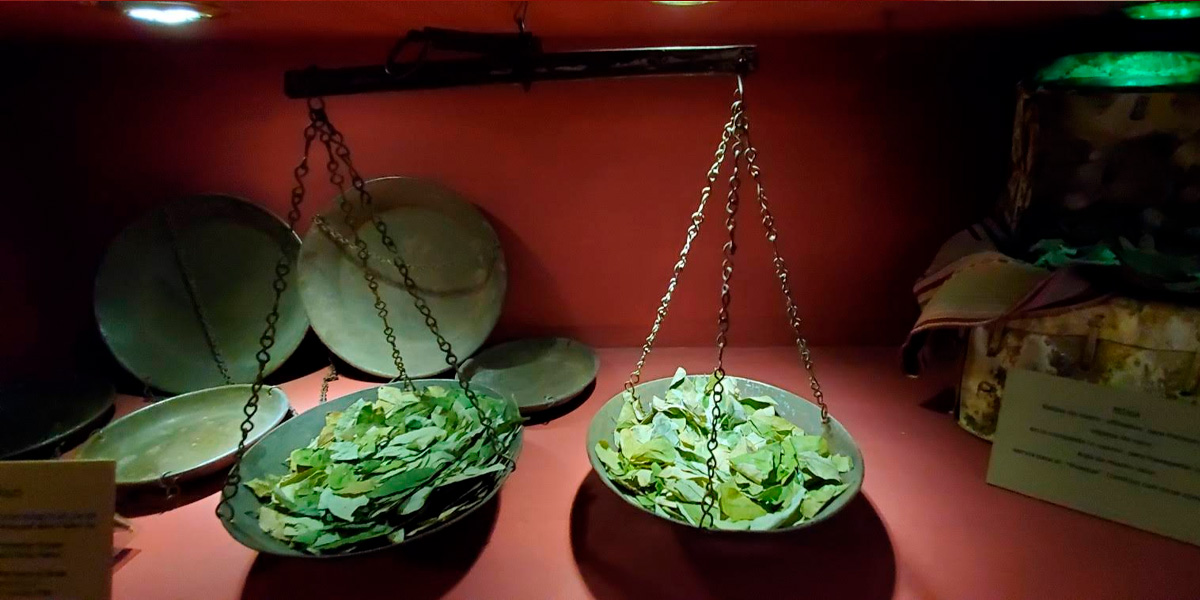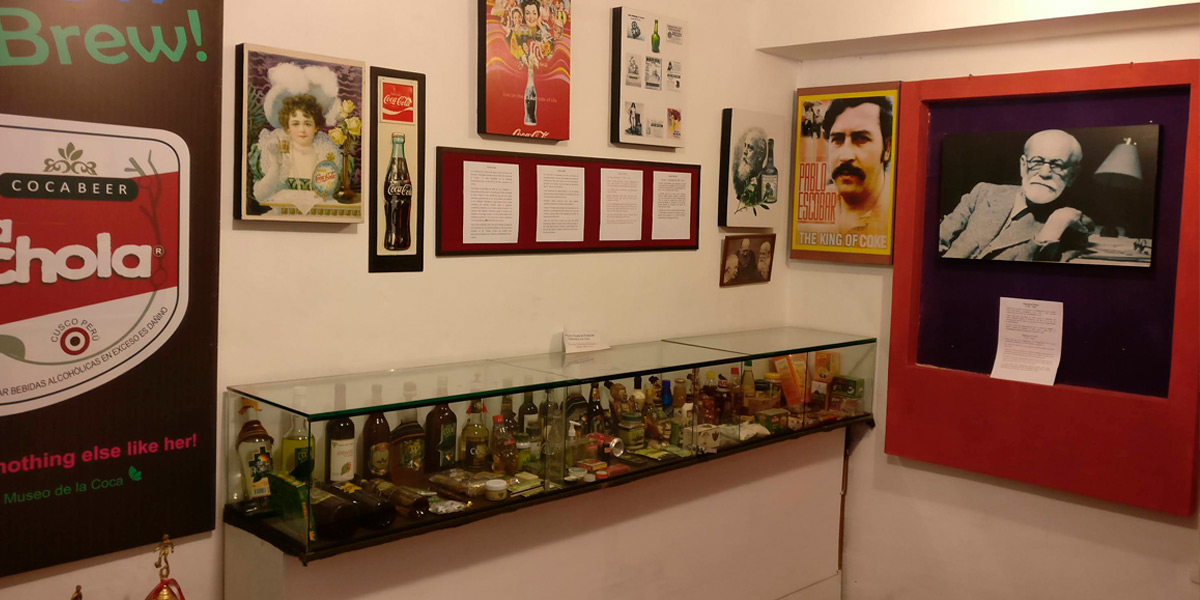The Coca Museum, located in Cusco, is a unique space that invites visitors to discover the history, myths, and multiple facets of the Incas sacred leaf. Through its rooms, visitors can learn about both the cultural and medicinal contributions of coca as well as the modern controversies surrounding its use. Furthermore, the tour concludes with a visit to its shop, where you can find products derived from the coca leaf, from teas and chocolates to natural creams. Admission is free on Sundays, making it an ideal place for those who wish to learn more about the Andean worldview.
This museum is a private cultural institution that was born as a university thesis project inspired by a family tradition. For more than 12 years, it has maintained its commitment to spread knowledge about the symbolic, nutritional, and medicinal value of the coca leaf, showing how it was used by ancient Andean civilizations as a source of energy, a ritual element, and a means of spiritual connection.
In addition to the interactive exhibitions, the museum presents a collection of ceramics, textiles, and books that contextualize the role of coca in the daily life of the Andean world. In its store, visitors can purchase various natural products made from coca, a perfect opportunity to take home an authentic souvenir of this millenary plant.
Where is the Coca Museum located in Cusco?
The Coca Museum is located in the traditional neighborhood of San Blas, in the city of Cusco, a few minutes from the Plaza Mayor of Cusco.
What to see and do at the Coca Museum?
The Coca Museum in Cusco is a unique cultural space that invites visitors to learn about the history, myths, and multiple facets of the sacred Inca leaf. Through its halls, visitors discover how this plant was essentially used by ancient Andean civilizations as a source of energy, a ritual element, and a means of spiritual connection, playing a key role in the Inca Culture of Peru.
The museum's tour not only focuses on the cultural and medicinal contributions of coca, but also on the modern controversies surrounding its use. In addition to the interactive exhibitions, the museum displays a collection of ceramics, textiles, and books that help contextualize the fundamental role of coca in the daily life of the Andean world.
-
Historical Evidence and Uses in Inca Culture
The museum presents in detail various aspects of the coca leaf and its derivatives, beginning with rooms that explore pre-Inca and Inca cultural varieties. Ceramics from the Paracas culture are exhibited, with impressive detail of protrusions on the face that allude to the process of chewing the coca leaf, commonly known in the Peruvian highlands as “picchado”. These pieces serve as evidence that the production and consumption of the coca leaf were already common practices long before the formation of the Inca Culture.
The coca leaf was also vital in ancient traditions that are still maintained in Peru, such as the payment to the earth or Pachamama, which is generally performed in the month of August. The museum also exhibits complementary elements, such as the llipta (alkaline substance used with coca) and the chuspas (Andean bags) that the chasquis used to transport the coca leaves, seeking to obtain the necessary energy and strength to travel long distances through the vast Inca Empire.
-
Awareness and the Dark Side of Cocaine
A crucial aspect of the exhibition is the room dedicated to showing the entire cocaine elaboration process, detailing the use of different chemical elements up to its conversion into white powder. This segment seeks to raise awareness among visitors about the misuse and risks of coca, presenting its negative side. The section includes the story of a person named Javier, who died at the age of 26 as a consequence of cocaine use and whose life served as the main inspiration for the creation of this museum in the City of Cusco.
In this way, the cultural institution seeks to fulfill an important educational function by exposing the fatal consequences of abuse, a message directed especially to high school and university students. This duality in the exhibition—showing the leaf as a sacred and medicinal element of the Inca Culture while warning about its harmful potential in the modern era—underscores the complexity of coca in the context of Peru and the world.
-
Derived Products and Authentic Souvenirs of Peru
The tour concludes in the museum store, a section dedicated to the exhibition and sale of a wide variety of coca-based products. Among them, visitors can find chocolates, sweets, coca flour, beers, and even drinks that combine the leaf with other Andean ingredients such as quinoa and muña. This section highlights the versatility of the leaf and the uses that can be given to it, and offers a unique opportunity to take home an authentic souvenir of Andean culture.
For those who wish a more traditional experience, the store also offers natural coca leaves for picchar (chewing), as well as medicines, ointments for the joints, and, as newer products, soaps and shampoos. This extensive sample of products allows visitors to the City of Cusco to appreciate how the millenary plant, so essential in the Inca Culture, continues to be a source of natural innovation and a true treasure of Peru.
What did the coca leaf mean to the Incas?
The coca leaf was very important in the Andean world, and they used it for different things, and they attributed a series of qualities to it. History shows us that Coca was used by the amautas or wise Incas to be able to see the time, they could predict and see the omens that could happen in the future.
Coca was used in one of the most important rituals of the Andean world, in the offerings they made to their deities such as Pachamama. They also used it as medicine, for example it was used to cure toothache, stomach pain, being a primary element of the Inca doctors or shamans.
Museum hours and admission
Visiting hours for the Coca Museum are Monday through Sunday from 9:00 a.m. to 9:00 p.m. There is an additional cost for foreigners and nationals.
Best Tours in Peru
Many are the routes that take you to Machu Picchu, but none is like the Inca Trail Tours, the most famous pedestrian path in the Americas. After flying from the capital of Perú, Lima, you will arrive in Cusco to walk for four days along a path through forests and dense fog, millenary stone steps and discovering the ruins of ancient fortifications and Inca cities, and all the time enjoying majestic views.
- Peru Adventure Holidays
- Enigmatic Peru
- Peru Full of Adventures
- Peru Luxury Travel
- Peruvian Highlands
- Discover Peru
Inca Trail, Machu Picchu and more
- Salcantay Trek Peru to Machu Picchu 5 days
- Palcoyo Mountain Tour
- Cusco to Manu Tour
- Humantay Lake Day Trip
- Huchuy Qosqo Day Hike
- Llactapata Inca Trail to Machu Picchu
- Apurimac River Rafting
- Vilcabamba Trek to Machu Picchu
- Inti Raymi and Machu Picchu Tour
If you want to visit Machu Picchu, we recommend you to book your Machu Picchu Ticket in advance, so you will enjoy your Vacation in Machu Picchu without any problem.








